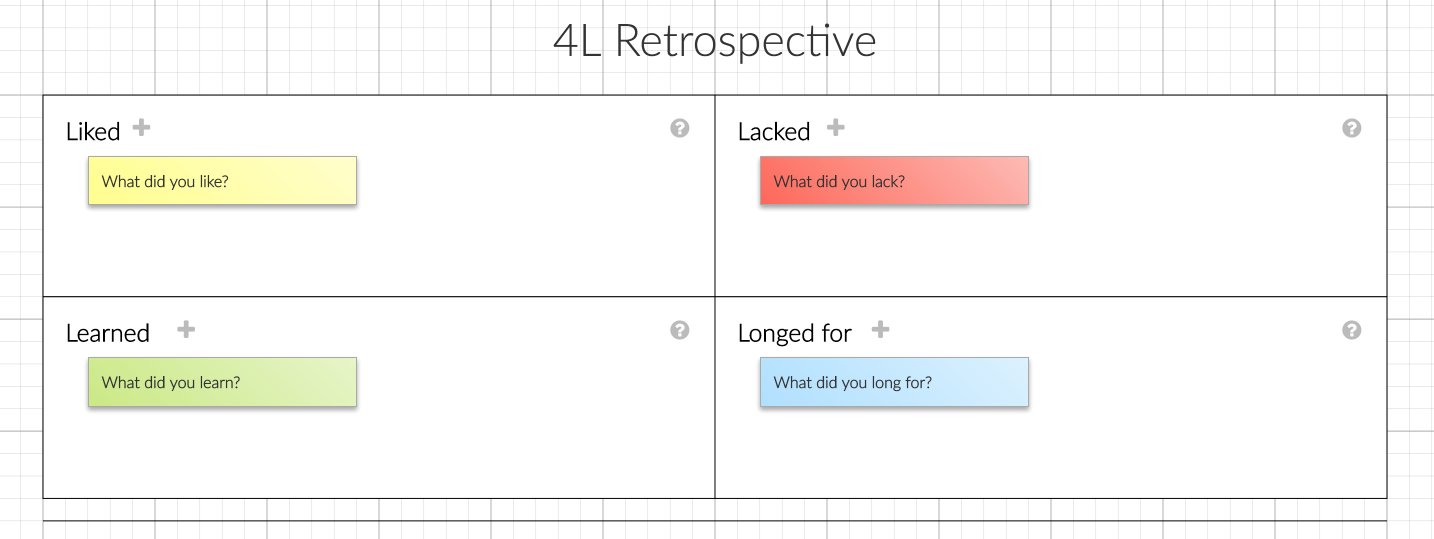Sprint retrospective meetings could sometimes be challenging to run due to many issues beyond scrum master directions. Here are the main ones – work format, team archetype, and team workflow preferences. Therefore, Standuply Scrum experts shared a few pointers on fun retrospective meetings and standup & retrospective tools to help all teams stay up-to-date and cut their scrum routine with fresh fun retro ideas.
So in this article, we get the best scrum practices content together – flexible retrospective meeting approach, top 7 fun retrospective games & activities, and must-have retrospective tools and standup bots to make scrum master’s life a little bit easier and team engagement breezier. 🙂
Sprint Retrospective: What Is It Exactly
Scrum Experts Reveal Their Secrets
In 2022 almost every high-performing team navigates with scrum, so no wonder that most of you know that retrospective meeting aims to identify improvements that will be implemented in the next Sprint by analyzing the previous one.
But first of all, we’ve got to know the real face of the sprint retrospective process. There is one genuine belief that all you need for a great retrospective is to ask retrospective magic questions: What went well? What didn’t go so well? What have learned? What still puzzles you? gather once-given answers and wait for a miracle to happen.
So, buddy, it doesn’t work this way 🙁
Although all questions-asked and answers-given procedures went fine, this is not at all a characteristic of a successful sprint retro. The proficient scrum master here performs like a real psychotherapist counselor who keeps creeping into the team’s mind over and over again until discovers the core.
Let’s take a classic retrospective meeting for instance. In the real work daily routine, you come across a typical situation when scrum masters hear the same simple retrospective answers:
Everything is fine – It’s all right – No problems – It’s sweet.
And repeat…
Did you recognize yourself? Honestly, every agile team member has ever wanted to answer this way. Even if you did so, a well-versed scrum master should have noticed a thread about the hidden improvement and followed it by asking leading questions.
Was there a task that you started without enthusiasm? Was there a task that you’ve been putting off for later and later? Why did this happen? etc.
Best Retrospective Meeting Is a Deep Conversation
Sometimes, when answering such leading questions, the thread can lead the team to improvements that they didn’t even know about at the retro beginning.
Unfortunately, there is no template for leading questions. So, the scrum master should instinctively notice the trigger threads in the answers and pull them in the correct way. Here are some examples of questions that could help.
Best Retrospective Questions
- On a scale of 1–10, how do you feel this sprint went? (Follow up by asking, “Why?”)
- What’s one word would you use to describe this sprint?
- During this sprint, did you ever feel like things took a wrong turn? If so, what happened?
- How do you feel about your work/life balance this sprint?
- If you could have additional support on one thing, what would it be?
- How did you cope with things that went wrong?
- What resources do you wish you’d had (or had more of) during this sprint? How would they have made a difference?
- How would you deal with [issue] in hindsight?
- Did any processes or systems create problems for you during this sprint? If so, how?
- Do you feel overworked, underworked, or that you have just the right workload?
- What do you feel motivated by right now?
- On a scale of 1-10, how energized do you feel going into the next sprint?
- What would you do if you were 100% responsible for this issue?
- What about this sprint was the biggest source of stress or difficulty for you personally?
- Did anything happen during this sprint that caught you off-guard?
Standup Bot Microsoft Teams and Slack Makes It Painless
For ease of workflow, the leading-questions process can be automated by launching a standup bot with the questions you need, in case if someone hit such kind of everything-is-fine-answers.
👉Learn more about Standup bot for retrospective meetings
So, by ignoring the IT’S FINE questions and running leading questions survey, scrum master makes a practical retrospective meeting from a formal one. For instance, as our experts say, there is always something that can be improved, the pile of “Everything is fine” never changes anything.
It is also important that during retro the team can feel free to share (remember the analogy with the psychological session). No judgment here, only an open discussion atmosphere!
Above all, to get the team to have a pleasant retro talk, first warm them up with small talk.
📌 Discover More: 130+ Icebreaker Questions to Get Teams Talking
Top 7 Fun Retrospective Agile Ideas To Refresh Daily Retro Routine
Fun retrospective (fun retro) – is the same scrum retrospective meeting that takes place after the sprint review but with some fun and straight-to-the-point game activities to Improve Employee Engagement and interaction between team members.
Consequently, as we already found out, each team has its own unique archetype or preferences for work or opinion on the workflow or whatever it called the point is – all teams are different. In other words, for some fresh-minded&young agile teams answering retrospective questions, one by one in a boring circle is a nightmare. However, a remote team of untalkative and 24/7 deep-in thought developers would prefer a traditional retro.
So first, find out your team archetype and then choose any of the best 7 fun retrospective ideas we love and use:
Mad Sad Glad Retrospective
Used for: identify the team’s emotional state, stress level, and psychological mind health for a new Sprint
Emotional health is the key to high productivity. So, this fun retrospective method will help to identify things that take energy from the team and ruin emotional health.
Football Retrospective
Used for: Identify Roles on the Team and interaction between its members
Position: What’s my role in the team?
Assist: How do I help others?
Pass: How do others help me?
Shoot: What tasks do I complete?
It is based on football with a well-coordinated team game as a success factor. Therefore, this fun retrospective will easily help in the analysis of each team member’s role.
Three Little Pigs Retrospective
Used for: Identify Weaknesses and Strengths
You can encourage your team to focus not just on the current sprint, but also on the series of past sprints to identify the points that constantly slow down the workflow.
House of straw: What is at risk of breaking?
House of sticks: What needs more work?
House of bricks: What is rock solid and working well?
5 Whys Retrospective
Used for: find the root cause of the problem
Identified a problem? Great! But are you sure you won’t face it again at the next sprint? Find it out during retro by asking at least 5 whys to get to the root cause.
KALM Retrospective
Used for: analysis of the actions taken
- Keep: Something the team is doing well and should continue doing.
- Add: Something new that the team should incorporate in the next sprint.
- More: Something that’s bringing value to the team, and you should do more of it.
- Less: Something that isn’t going as well, and you should do less of it.
Sailboat Retrospective
Used for: diversify the routine retrospectives a well-known, working together for a long time team
This is an analogy that visualizes the last sprint as a sailboat and identifies what propelled it forward (like wind), what held it back (like anchors), what helped it feel good (sun), and what risks could be in the future (reefs).
Frankly speaking, there are innumerable fun retrospective practices that you can take. We share the most popular ones the Standuply team loves and uses.
4L Retrospective
Used for: focus on positive outcomes that the team can use going forward
After a team has struggled with a difficult week, the best thing to do is to concentrate on the positive. So 4L fun Retrospective works here as a great and simple alternative to typical retros everyone is used to.

Fun Retrospectives: Useful Remote Scrum Tools That Make Their Best
In 2022 reality companies all over the world are tending to send their employees home to work online. As a result, the need for team members to stay connected, maintain transparency, and foster collaboration is both a necessity and a challenge.
For this reason, retro tools for remote and asynchronous work have grown in popularity. So must-have retrospective tools and the best standup bot outlined in this article will help you to structure and facilitate a remote sprint retrospective for your team.
In addition to retro tools, Scrum tools like Trello, and Asana, Standuply are essential for managing agile teams remotely. They facilitate communication, collaboration, and transparency, helping teams maintain efficiency and productivity in a remote work environment.
1. Digital Board / Task Board
Similar to the physical world, utilizing a digital task board as the focal point of discussion during your retro meetings helps team members connect with their work at a deeper level and think more deeply about a task, sprint, and their commitments.
There are a lot of solutions that function as standup & retrospective tools on the market now, such as Miro, Trello, Jira, Click up and etc. All of them work great and stand for digital alternatives to physical surfaces.
2. Video Conferencing Tools
There are many video conferencing solutions available to choose from and make your retro meetings run face to face. Moreover, there are intuitive, easy-to-use, and reliable video conferencing platforms on the market many of which are helpfully built-in into our everyday devices. In other words, all this allows us to keep virtual eye contact, share the screen, demonstrate presentations, and discuss some issues in a working chat.
3. Invite Standup Bot to Your Retrospectives
Standup & retrospective bot is your digital Scrum Master which integrates with Slack or Microsoft Teams. Standup bot is used today for the automation of Agile and Scrum rituals in remote and distributed teams. So, standup & retrospective bots can put retrospectives on auto or play as a great retro tool for gathering all answers in advance, keeping answer/task statistics&analytics, and facilitating video conferences right in Slack / MS Teams to discuss a topic.
Standuply is a standup&retrospective tool that covers a wide range of functionality, user-friendly management, and full customization. Many teams have already trusted Standuply and title it one of the best standup bots for Slack and Microsoft Teams.
Conclusion
In conclusion, the sprint retrospective meeting is a vital part of the Scrum process that helps teams identify areas for improvement in their work. However, running a successful retrospective meeting can be challenging due to the workshop format, team archetype, and team workflow preferences. The key to a successful retrospective meeting is to have a deep conversation with the team and ask leading questions that can trigger improvement. Additionally, warm up the team with small talk before the meeting to create a pleasant atmosphere for open discussion. Fun retrospective games and activities can also be useful to engage the team and cut through the routine. Moreover, there are many tools and standup bots available to make retrospective meetings easier and more efficient, especially in remote work situations. With the help of these tools and techniques, Scrum masters can make retrospective meetings more productive and enjoyable, leading to improved team performance.
You can find additional tips and ideas for making your retrospectives more effective, as well as information on other retrospective formats you can try.


